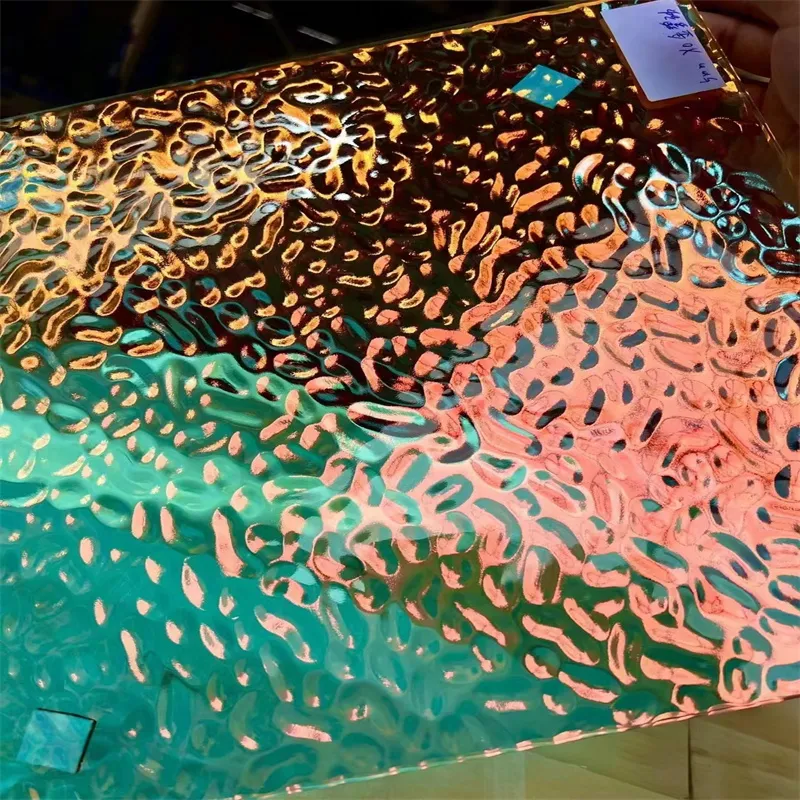Nov . 06, 2024 10:52 Back to list
Exploring the Benefits of 13.52mm Laminated Glass for Enhanced Safety and Aesthetics
The Significance of 13.52 mm Laminated Glass in Modern Architecture
Laminated glass, particularly 13.52 mm in thickness, has become an integral part of contemporary architectural design, offering a blend of safety, aesthetic appeal, and energy efficiency. As architectural trends evolve, so does the need for materials that not only enhance the visual appeal of buildings but also provide structural integrity and protection. This article delves into the characteristics, benefits, and applications of 13.52 mm laminated glass, highlighting its importance in current construction practices.
Understanding Laminated Glass
Laminated glass is produced by sandwiching a layer of polyvinyl butyral (PVB) or another interlayer between two or more panes of glass. The result is a composite material that possesses enhanced strength and safety features. The thickness of 13.52 mm makes it particularly robust, suitable for a variety of applications.
One of the most significant advantages of laminated glass is its safety characteristics. In the event of breakage, the inner layer holds the shards of glass together, preventing them from shattering and causing injury. This feature is pivotal in areas that demand high safety standards, such as schools, hospitals, and residential buildings. It significantly reduces the risks associated with glass injury, making laminated glass a preferred choice for architects and builders.
Aesthetic and Functional Benefits
Beyond safety, 13.52 mm laminated glass offers substantial aesthetic benefits. Available in various colors, tints, and finishes, it allows architects to create visually stunning structures that complement their surroundings. The thickness of 13.52 mm provides a clear, distortion-free view, making it ideal for facades, large windows, and skylights. This thickness also contributes to better acoustic insulation, minimizing external noise pollution and creating a more serene indoor environment.
13.52 mm laminated glass

Another vital benefit is its energy efficiency. Laminated glass can be treated with low-emissivity coatings or combined with insulating glass units to enhance thermal performance. This adaptability makes it possible to regulate indoor temperatures effectively, reducing reliance on heating and cooling systems. Consequently, buildings incorporating laminated glass can achieve significant energy savings, contributing to sustainability efforts.
Applications in Modern Architecture
The versatility of 13.52 mm laminated glass makes it suitable for various applications. In residential settings, it is often used for large sliding doors and windows, allowing for expansive views and abundant natural light while maintaining safety. In commercial architecture, it is frequently employed in storefronts and office buildings, combining elegance with security. Additionally, its use in railings and balustrades provides safety without compromising visual aesthetics.
In high-rise buildings, laminated glass is invaluable in curtain wall systems, where it offers structural support while enhancing the building’s aesthetic appeal. Furthermore, it is commonly used in skyscrapers for its ability to withstand high winds and prevent the dangers associated with falling glass in storms.
Conclusion
The adoption of 13.52 mm laminated glass in modern architecture reflects a growing understanding of the need for safety, efficiency, and design elegance. Its robust features, coupled with aesthetic versatility, make it a sought-after material in today’s construction industry. As architects continue to innovate, the utilization of laminated glass will likely expand, further solidifying its role in creating safer, more beautiful, and energy-efficient structures. As the world moves towards sustainable building practices, laminated glass stands as a testament to the harmonious blend of functionality and design, paving the way for a more resilient future in architecture. In conclusion, embracing 13.52 mm laminated glass not only enhances the safety and aesthetic of buildings but also aligns with the overarching goal of sustainable development in architecture.
-
Safety and Style with Premium Laminated Glass Solutions
NewsJun.24,2025
-
Reinvents Security with Premium Wired Glass
NewsJun.24,2025
-
Premium Float Glass Line for Modern Architecture
NewsJun.24,2025
-
Low Emissivity Glass for Energy-Efficient Architecture
NewsJun.24,2025
-
High-Performance Insulated Glass Solutions for Modern Architecture
NewsJun.24,2025
-
Elevates Interior Style with Premium Silver Mirror
NewsJun.24,2025
Related PRODUCTS














